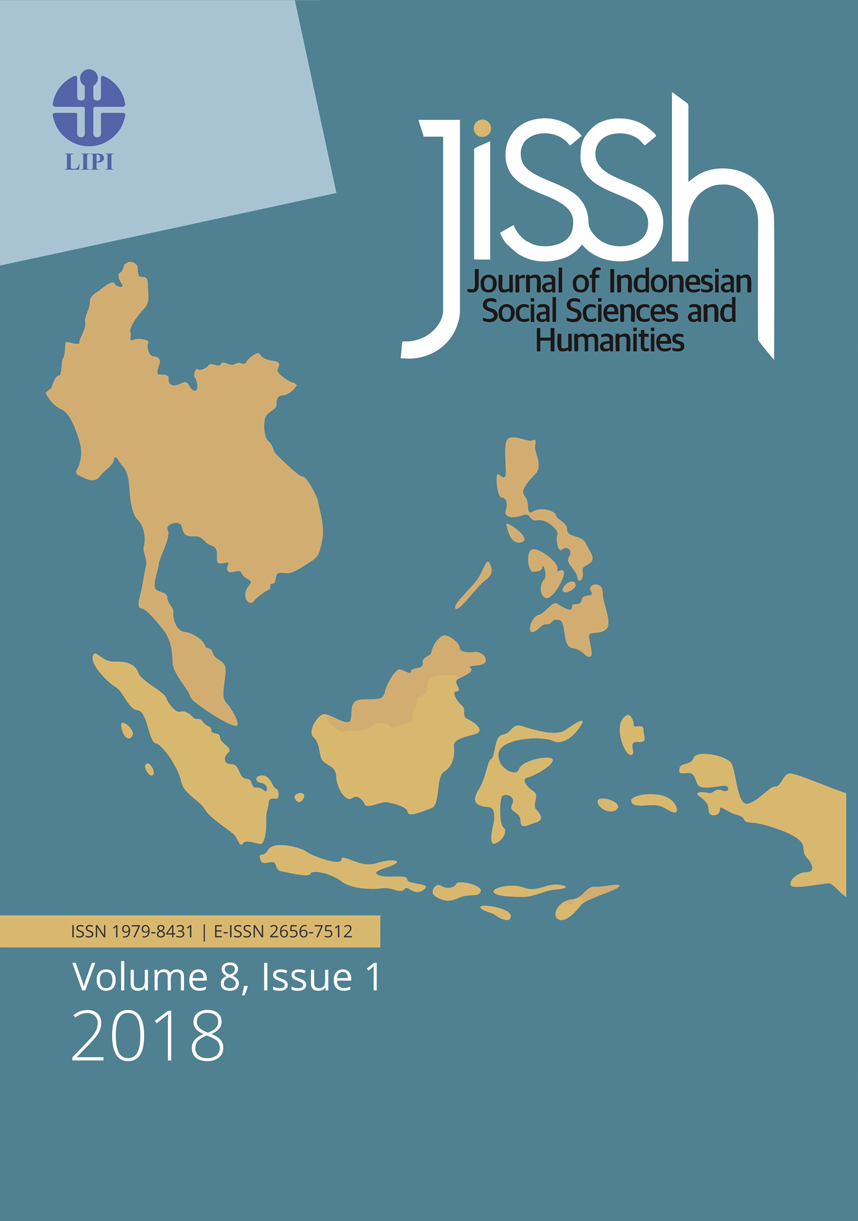Conflict Management in Indonesia: Policy Perspective and Analysis
Keywords:
conflict prevention, non-state actors, roots of violence, security policy, peace resolution, peace buildingAbstract
This article focuses on analysing the roots of violence and examines case studies in Indonesia. This article aims at determining the effectiveness of policies in conflict management by analysing the critical factors involved in violent conflicts and briefly seeking alternative solutions to prevent them from happening in the future. Furthermore, this article aims to answer two central questions. Firstly, this study looks at how effective the Indonesian government’s policy on security and conflict is. Secondly, this study considers the roles of NGOs in supporting the effectiveness of the policy on security and conflict. To prevent future conflicts, there are three effective strategies that can be implemented, and they require collaboration between policymakers and society. The first strategy involves designing an effective early warning mechanism, which would be able to inform the government of a potential friction that could escalate to a larger conflict. The second strategy is an effective policy to prevent and manage conflict and provide peace building mechanisms post-conflict. The third strategy is to urge the participation of non-state actors in conflict management. The Indonesian government and House of Representatives (Dewan Perwakilan Rakyat – DPR) have passed a bill on social conflict management written as Law No. 7/2012 and known as UU PKS. However, UU PKS arguably leaves numerous loopholes. Moreover, the activities of NGOs in conflict management can be divided into two main categories: public engagement and advocacy. Public engagement activities focus on services for the public, while advocacy focuses on maintaining communication and putting pressure on the government. In public engagement activities, NGOs offer services to provide psychological and legal assistance, consulting with victims on their rights as well as providing legal advice and psychosocial support to victims. Moreover, in the advocacy approach, NGOs maintain to put pressure and lobby the government to ensure peace and justice in law enforcement.
References
Ackermann, A. (2003). The Idea and Practice of Conflict Prevention. Journal of Peace Research, 40(3), 339-347.
Arjon, S. S. (2015). Political Influence of Local and International NGOs in Domestic Policymaking Processess: Kidnapping Prevention in Colombia. Master’s Thesis at University of Amsterdam, 1-70.
Bertrand, J. (2004). Nationalism and Ethnic Conflict in Indonesia. Cambridge: Cambridge University Press.
Brubaker, R. (2015). Religious Dimensions of Political Conflict and Violence. Sociological Theory, 33(1), 1-19.
Craig, G. A., & George, A. L. (1995). Force and Statecraft: Diplomatic Problems of Our Time. New York: Oxford University Press.
Drexler, E. (2006). Provoking violence, authenticating separatism: Aceh’s humanitarian pause. In C. A. Coppel, Violent conflicts in Indonesia: analysis, representation, resolution (pp. 163-173). New York: Routledge.
Duncan, C. R. (2013). Violence and Vengeance: Religious Conflict and Its Aftermath in Eastern Indonesia. New York: Cornell University Press.
Evans, G. (2008). The Responsibility to Protect: Ending Mass Atrocity Crimes Once and For All. Washington D.C: The Brookings Institution Press.
Galtung, J. (1969). Violence, Peace, and Peace Research. Journal of Peace Research, 6(3), 167-191.
Hauss, C. (2001). International Conflict Resolution: International relations for the 21st century. New York: Continuum.
Jentleson, B. W. (1998). Preventive diplomacy and ethnic conflict: Possible, difficult, necessary. In D. A. Lake, & D. Rothchild, The international spread of ethnic conflict: fear, diffusion, and escalation (pp. 293-316). Princeton: Princeton University Press.
Min, S. S. (2006). ‘Eventing’ the May 1998 affair: problematic representations of violence in contemporary Indonesia. In C. A. Coppel, Violent conflicts in Indonesia: analysis, representation, resolution (pp. 39-57). New York: Routledge.
Nordholt, H. S. (2002). A genealogy of violence. In F. Colombijn, & J. T. Lindblad, Roots of violence in Indonesia: Contemporary violence in historical perspective (pp. 33-62). Leiden: KITLV Press.
Panggabean, S. R. (2006). Educating to handle conflict and avoid violence. In C. A. Coppel, Violent conflicts in Indonesia: analysis, representation, resolution (pp. 217-228). New York: Routledge.
Scherrer, C. P. (2002). Structural Prevention of Ethnic Genocide. New York: Palgrave MacMillan.
Shapiro, D., & Kinon, A. (2010). The Prevention Principle: A Pragmatic Framework to Prevent Destructive Conflict. Journal of International Dispute Settlement, 1(2), 301-312.
Stewart, F. (2002). Horizontal Inequalities as a Source of Conflict. In F. O. Hampson, & D. M. Malone, From Reaction to Conflict Prevention: Opportunities for the UN System (pp. 105-138). London: Lynne Rienner Publishers.
United Nations Press Releases. (2004, 4 7). Meetings Coverage and Press Releases. Retrieved 12 19, 2016, from United Nations: https://www.un.org/press/en/2004/sgsm9245.doc.htm
Varshney, A., Tadjoeddin, M. Z., & Panggabean, R. (2010). Patterns of Collective Violence in Indonesia. In A. Varshney, Collective Violence in Indonesia (pp. 19-50). London: Lynne Rienner Publishers
Downloads
Published
Issue
Section
License
Copyright (c) 2018 Sugit S. Arjon

This work is licensed under a Creative Commons Attribution-ShareAlike 4.0 International License.
Authors who publish with this journal agree to the following terms:
1. Authors retain copyright and grant the journal right of first publication with the work simultaneously licensed under an Attribution-ShareAlike 4.0 International (CC BY-SA 4.0) license. This license allows others to remix, adapt, and build upon the work, as long as they credit the author and license their new creations under the same terms.
2. Authors may enter into separate, additional contractual arrangements for the non-exclusive distribution of the journal’s published version of the work (e.g., posting it to an institutional repository or including it in a book), provided there is an acknowledgment of its initial publication in this journal.
3. Authors are permitted and encouraged to post their work online (e.g., in institutional repositories or on their personal website) prior to and during the submission process, as this can lead to productive exchanges and increase citations of the published work (See The Effect of Open Access ).


















